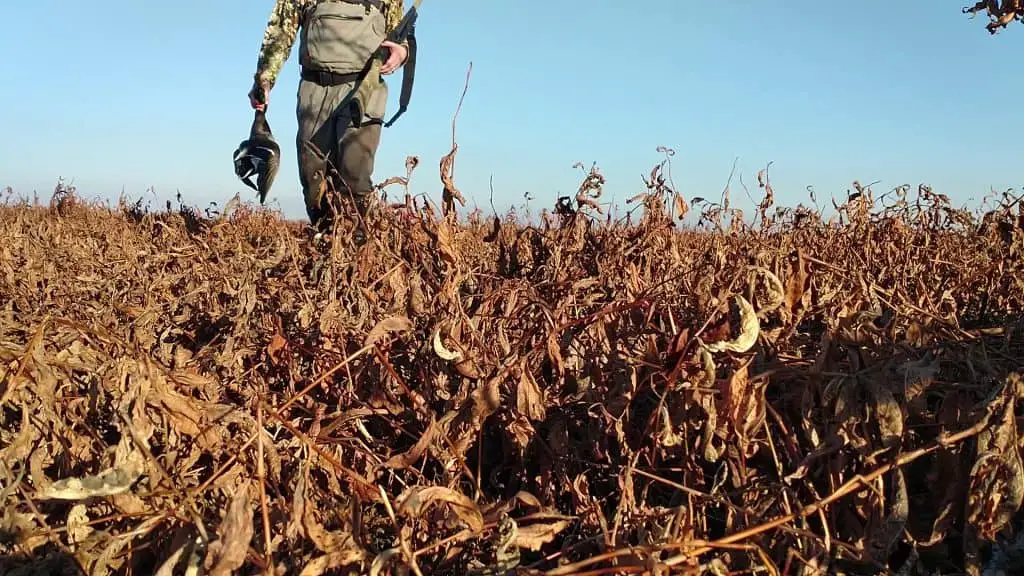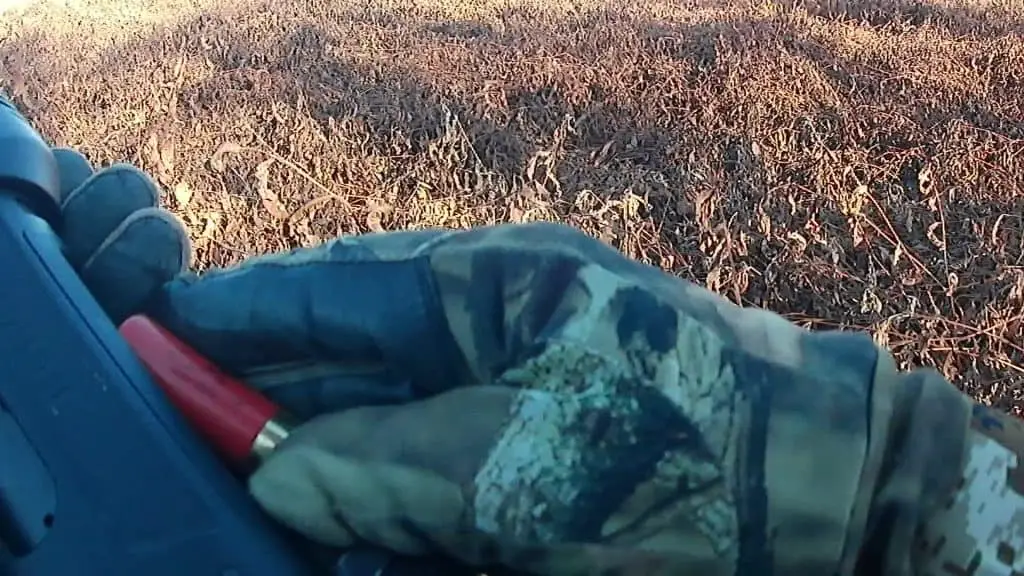The amount of gear most duck hunters use deterred me from duck hunting for a long time. Then I discovered that jump-shooting (or spot-and-stalk hunting) ducks can be highly effective and is a fun challenge. What’s best is that you don’t need very much gear to start jump-shooting. You just need a shotgun and, depending on the water you hunt, some waders.
To jump-shoot ducks you just need to find some ducks and sneak within shooting range. It’s a simple strategy that anyone with perseverance and patience can pull off. Over the years I’ve learned a few things that can increase the number of ducks you find and the number of shots you get.

1. Try more spots
The hardest part of jump-shooting ducks is finding ducks in the right location. Jump-shooting works best when you can find ducks in shallow water near cover that allows you to get close without being seen. At first, it can be difficult to identify a good jump-shooting situation, but the more spots you try to sneak up on the ducks the more you will learn what the perfect situation looks like. To figure this out try sneaking up on any ducks that you think you have a chance at.
I’ve crawled through 150 yards of short grass just to get in close on some mallards, and from that I learned that I prefer to find ducks closer to tall vegetation. On another occasion I thought that some sparse trees would be enough cover, only to flush the ducks before I got into shooting range. From that, I learned to crawl any time I’m in doubt about the quality of my cover.
Put yourself in as many situations as possible and you’ll learn a lot about getting close to waterfowl.
2. Use binoculars

A good set of binoculars will help you cover more ground while looking for ducks to jump shoot. I use a pair of 8-power binos and can easily spot ducks from a half-mile or more away. This saves me a lot of time walking in to check different locations.
I like to find a place where I can see a good section of shoreline or river and give it a good glassing. If I don’t see any ducks I move to a new vantage point. Even with binoculars, it can be difficult to spot ducks at a distance if they are in flooded vegetation or right next to the shoreline. Watch for movement, splashing, or other ducks dropping in.
Binoculars are also useful when sneaking in close. If you’re crawling in on a group of ducks, it can be difficult to see exactly where they are through grass, brush, and trees. Use your binoculars to look through the brush and focus on the waterline. This will help you find the ducks and get into the best possible shooting position.
3. Get close
For the best shot opportunities, you’ll want to get closer to the ducks than you think you need to be. I’ve found it’s really hard to judge distance when you’re on your knees at eye level with the ducks. I try to get as close as possible without flushing the ducks on my approach. Remember, once you flush the ducks, they’ll fly away from you so you’ll get more shots if you can pull up for a shot at 20 yards instead of 30 yards.
4. Use cover
When planning your approach take advantage of any cover that is available. You’d be amazed by how helpful four extra inches of vegetation can be when you’re trying to get close. Try to use as much tree cover as possible to limit the distance you need to crawl. After completing the 150-yard crawl I mentioned earlier I realized I could have cut my crawling distance in half by coming at the ducks from a different angle that had more tree cover.
5. Crawl

Don’t be afraid to get down on your hands and knees, or stomach, and crawl to close the distance to the ducks. In many situations, crawling is the only way you’ll get close enough to put yourself in a shooting situation. In many areas, duck hunting season coincides with low water, which means there will be open shorelines along many lakes. This makes it easy for ducks on the water to spot anything moving toward them.
If you get low and use cover to block your silhouette and movements it’s not too difficult to get in shooting range of most ducks. In fact, the only times I’ve busted ducks before getting within shooting range have been when I tried to get too close while standing or crouching. In those situations, I probably could have slipped in close enough for a shot if I had just crawled.
6. Don’t get too close
Getting close to ducks is important for being a successful jump-shooter. But it’s also important to not get too close. If you sneak in too close you can flush the ducks when your head’s down and your hands are away from your gun. It’s not the worst thing that can happen, but it can be the difference between bringing home one duck or three.
While it may sound hard to get too close, I’ve done it a couple of times. Each time it happened when there was a group of ducks closer to me than the ones I was trying to jump shoot. When I got too close to the ducks I didn’t see, they flushed, taking all the ducks with them. I came away with one duck, but had I been ready I would have had two or three.
7. Reload

After you shoot, make sure to reload immediately. Most jump-shooters aren’t hunting with dogs, which means you’ll need to retrieve your own birds. You want to have shells in your gun for any cripples. While this may seem like a small time, I think it’s one of the most important. I believe that if we’re going to take shots at ducks we need to be responsible for the outcome of those shots and always give our best effort to retrieve any birds we hit.
There have been two occasions where I lost a crippled bird because I didn’t have any shells in my gun when it paddled out of the weeds and out of range into open water. I thought my initial hit on the bird was enough, but it wasn’t. Ducks can be tough birds.
8. Avoid flushing big groups of ducks

When jump-shooting it’s good form to leave large groups of ducks alone. If you flush a big group you’re only going to get three shots off and may push the rest of the ducks out of your hunting area. They might come back but they might not. This also affects other hunters who may be trying to decoy the same birds. What’s more, if you were to set up a decoy spread once you find those big groups, it’s likely that you could pull in more birds and have a nice hunt (I do realize that you might be jump-shooting because you don’t have decoys, I’ve been there).
There’s no hard and fast rule against this, but just consider how jumping a big group will affect your hunting and others’ hunting throughout the day or season. Jump-shoot long enough and you’re bound to sneak up on a group of 10 birds that turns into 200 once you flush them. It’s happened to me. Don’t sweat it, just do your best to be courteous and thoughtful of ducks and other hunters.
Conclusion
Jump-shooting ducks is not difficult to do, but it’s also not quite as easy as it sounds. It took me a few hunts of getting skunked to get the hang of it. Now, I almost always get shots at ducks when jump-shooting (sometimes hitting them is a different story). If you’re having trouble with your jump-shooting hunts, give these tips a try. They’ll help you find and kill more ducks as you figure out the jump-shooting style and strategies that works best for you.

